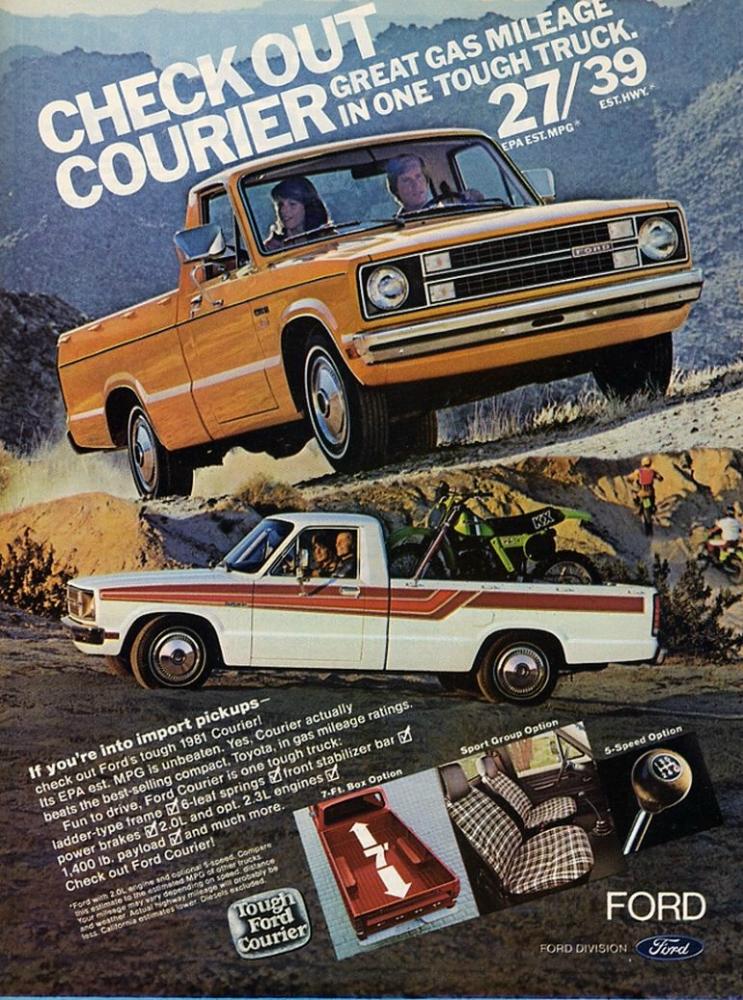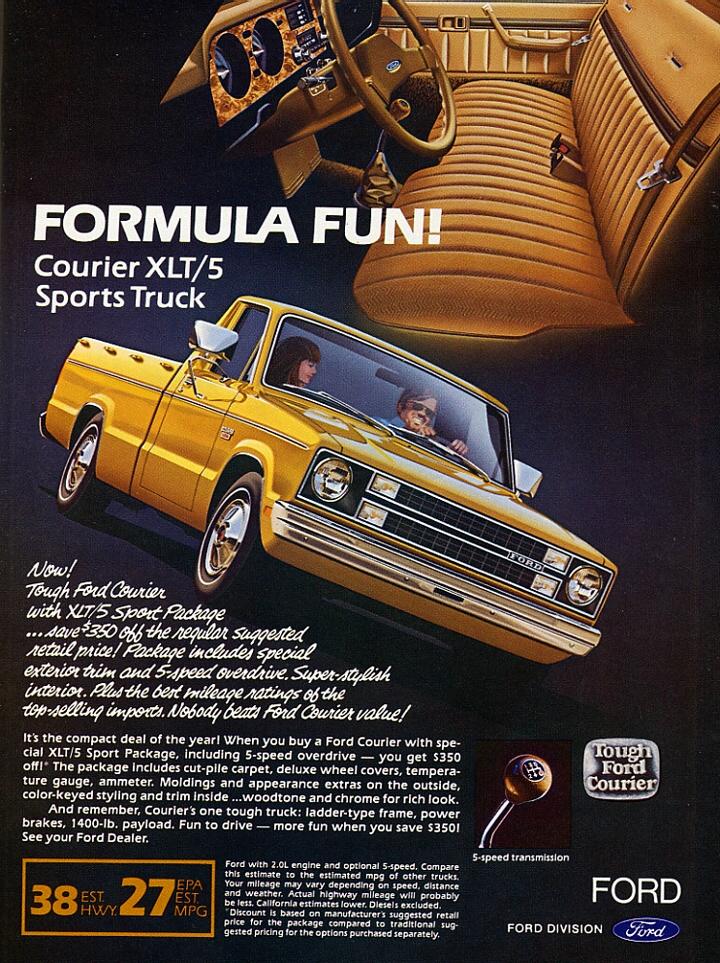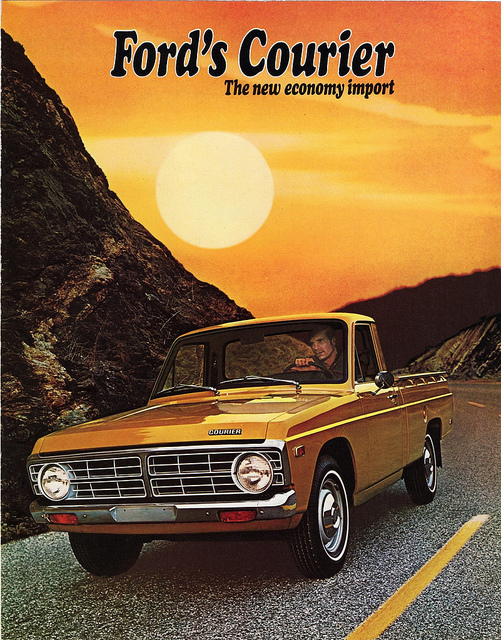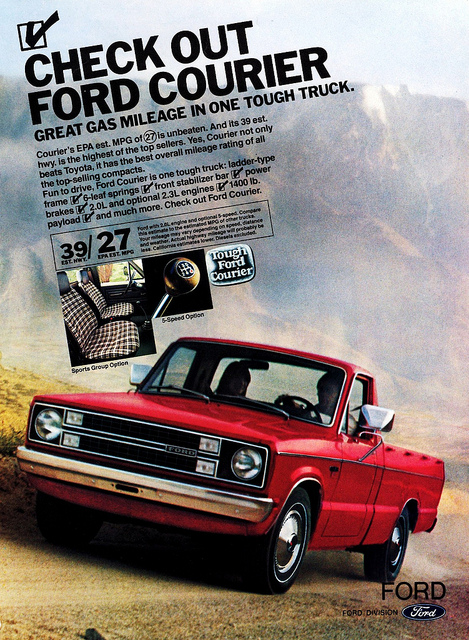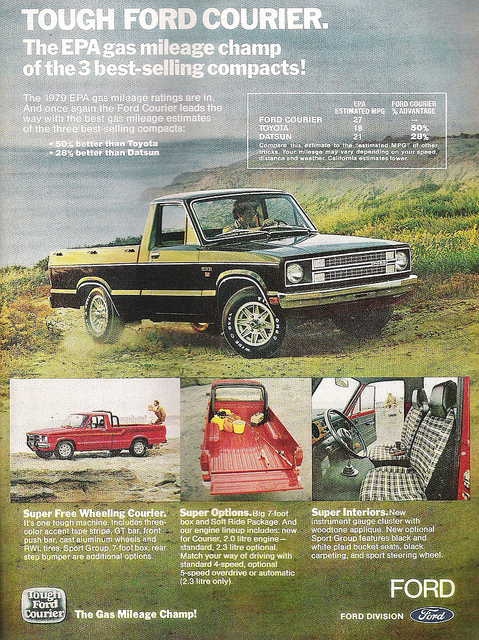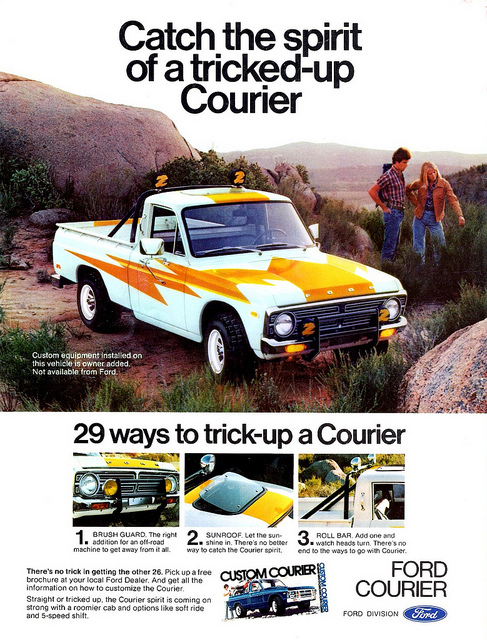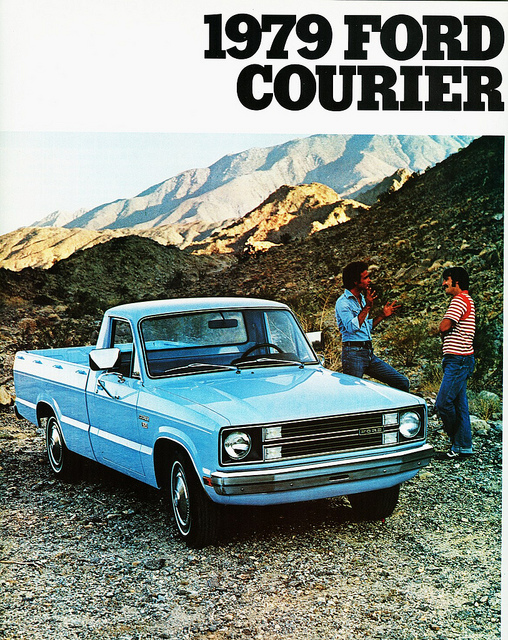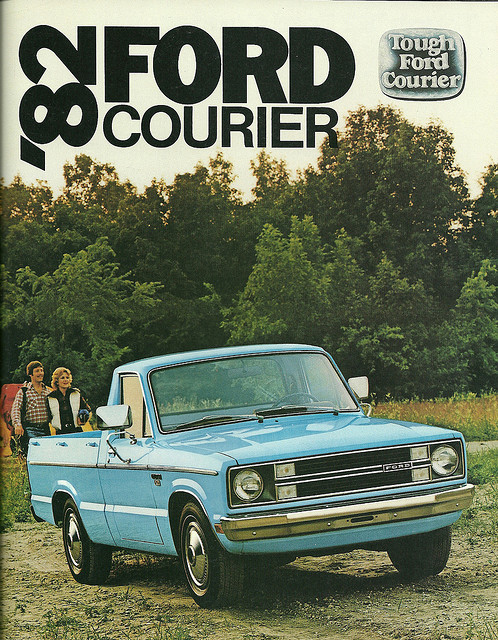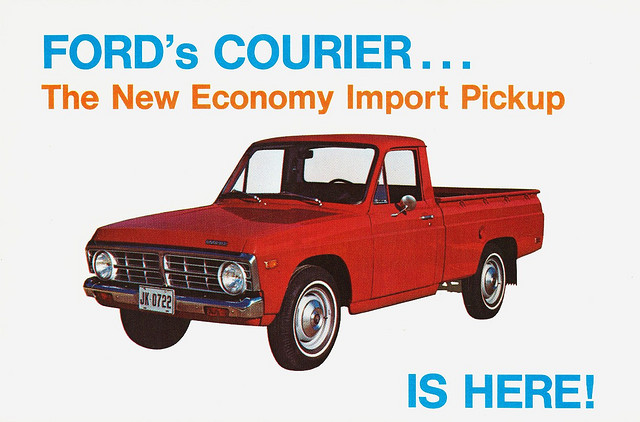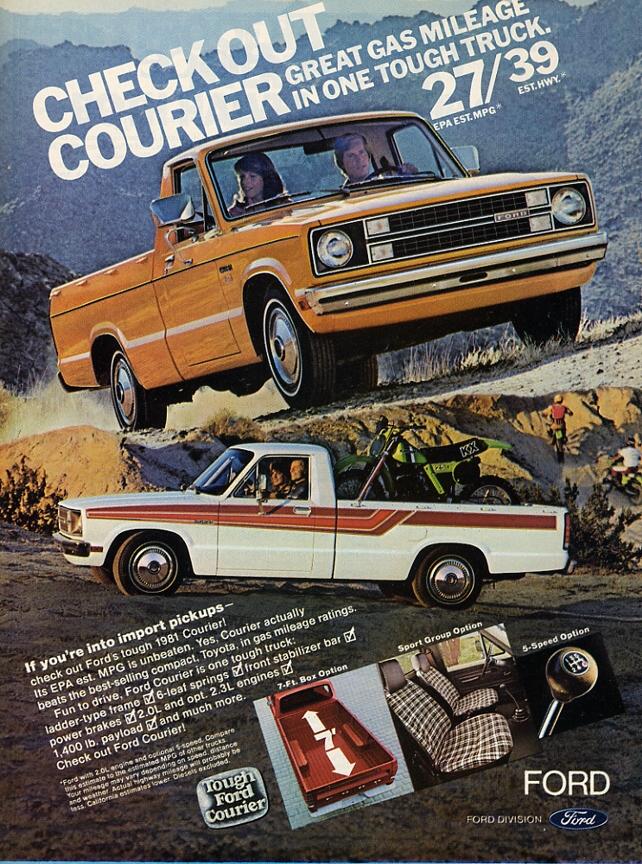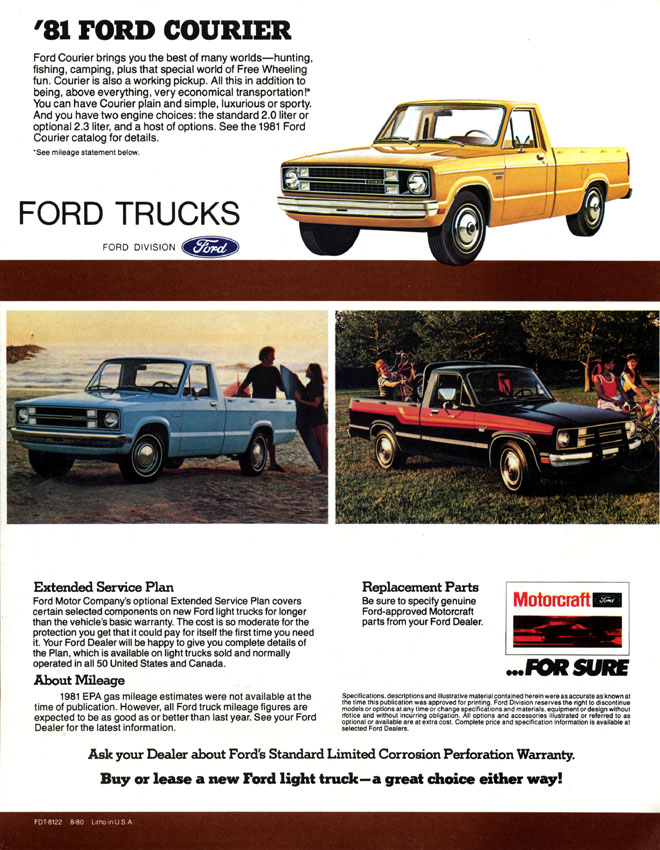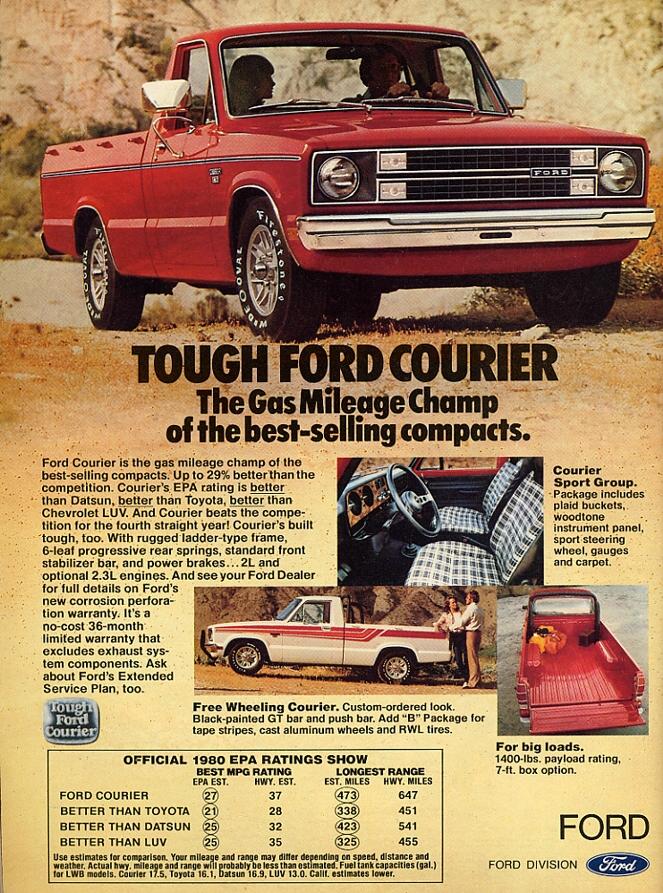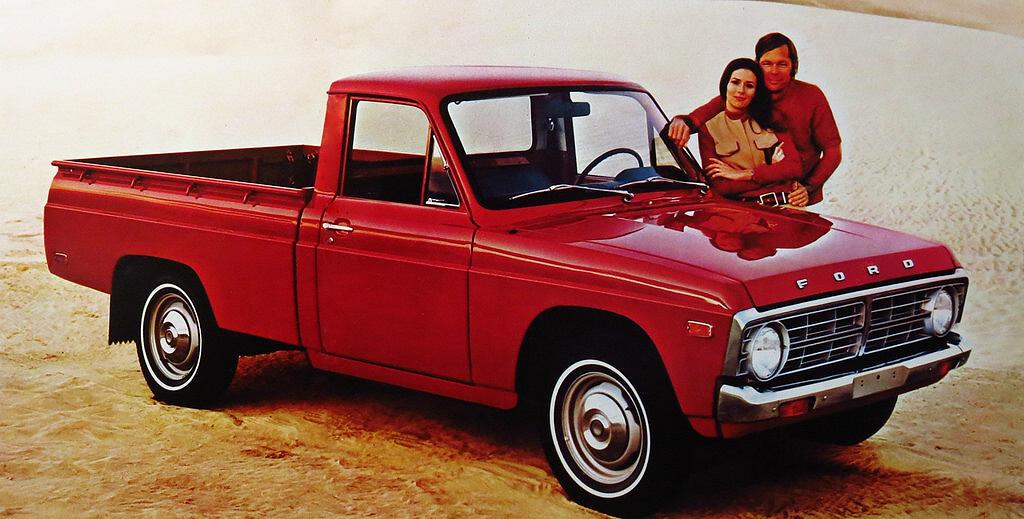
In 1971, Ford entered in to a partnership with Mazda to import their B-Series trucks in to the United States as a response to the unforseen popularity of the small Toyota and Nissan/Datsun pickups. This resulted in Ford having a 7% stake in Mazda (Ford acquired a 24.5% stake in 1979). Prior to this, Ford had used the name ‘Courier’ on its 1952-1960 sedan delivery variants of Ford’s US mainstream passenger vehicles.
Ford imported the new Couriers for the 1972 model year. Like the other minipickups of the time, it featured a sub-2-liter, four-cylinder engine, a four-speed manual transmission, rear-wheel drive, an impressive load capability of 1,400 lb (635 kg) considering its size, and a fairly small price tag compared to full-sized pickups of the time. To circumvent the 25% “chicken tax” on light trucks, Couriers (as with Chevrolet LUVs) were imported in “cab chassis” configurations, which included the entire light truck – less the cargo box or truck bed – and were only subject to a 4% tariff. Subsequently, a truck bed was attached to the chassis and the vehicle could be sold as a light truck.
The body styling was effectively that of the related Mazda B-series; however, its front styling was unique in that the grille was designed to emulate the larger Ford F-series, and large single headlights instead of the B-series’ smaller twin units.
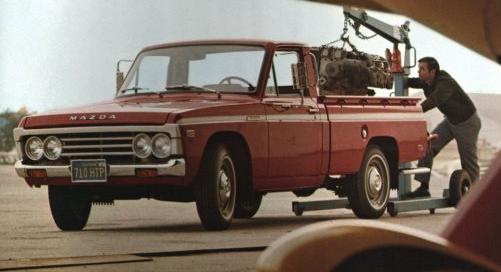
1972 Mazda B-Series pickup for comparison
When the Courier was introduced, it came standard with a 1.8-liter overhead-cam engine, which produced 74 hp (55 kW) at 5,070 rpm, and 92 lb-ft (125 N·m) at 3,500 rpm. A four-speed manual transmission was standard, and a three-speed automatic was optional. A five-speed manual option was introduced for the 1976 model year.
The Courier’s badging changed a few times in the first generation. In 1972 and 1973, the tailgate read “COURIER” in large raised letters, with a small “FORD” badge on the upper left. The 1972 model has a small “COURIER” badge on the front driver’s side edge of the hood, and from 1973 through 1976, the hood badging read “FORD”. From the 1974 model year, the tailgate read “FORD” in large letters, with a small “COURIER” badge on the lower right. In 1976, the cab was lengthened by 3 in (76 mm), and the grille received added trim.
Beginning in 1977, Ford gave the Courier a fresh look, moving into the more blocky, angular styling that is distinct of 1980s automotive design. In 1979, the base model engine was increased in size to 2.0 liter (120.1 cid).
The truck was available with front disc brakes, and a Ford-built 2.3-liter engine option (which was the same as that of the Ford Pinto & Mustang II and Mercury Bobcat & Capri). The key identifying feature of the Courier from the Mazda B-Series was still the singular headlights, although with park and indicator lights placed in the grille starting in 1978 (1977s still had the turn signal lights in the bumper). In 1979, the base model was increased in size to 2.0 liter (120.1 CID). The optional Ford 2.3-liter (140 cid) engine was produced in Brazil. The Courier was never available with a diesel engine in the US. However, the 1980 Mazda B2200 was available with the S2, a Perkins-built 4.135 (four-cylinder, 135-cid) 2.2-liter diesel engine, producing 66 hp (49 kW) at 2,100 rpm. This same diesel engine was available in the 1983 and 1984 Ford Rangers, but it was replaced by the Mitsubishi 4D55T 2.3-liter turbodiesel (also used in Mitsubishi’s own Mighty Max and the Dodge Ram 50) for the 1985 to 1987 Ford Rangers.
The Courier continued to be sold in North America until 1982 model year. For 1983, Ford introduced its own Ford Ranger to fill its compact truck segment in the United States and Canada, effectively replacing the Courier.
Bodystyle Differences:
Though the basic bodystyle was the same from 1972 to 1976, there are a number of small differences that can often tell them apart:
In 1972, the tailgate said Ford Courier in large letters
In 1973 it was changed to say Courier in large letters, with a small Ford badge
In 1974 it was changed to say Ford in large letters, with a small Courier badge in the upper right side
In 1976, the cab was lengthened by 3-inches
In 1977, the Courier got a boxier design that’s quickly recognized by the rectangular / square grill design
The California Stepside conversion – A few Couriers were sold without a bed, to allow a Chevy stepside bed to be added
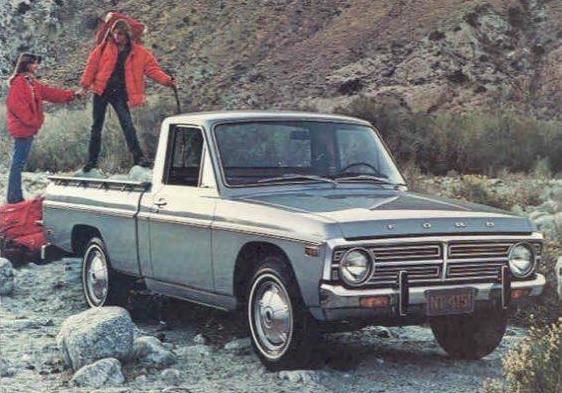
1976 Ford Courier above – 1977 Ford Courier below
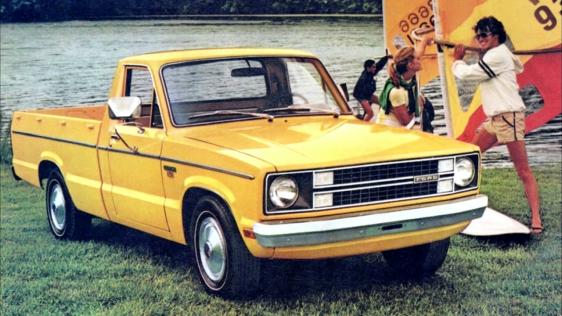
Ford Couriers 4×4’s:
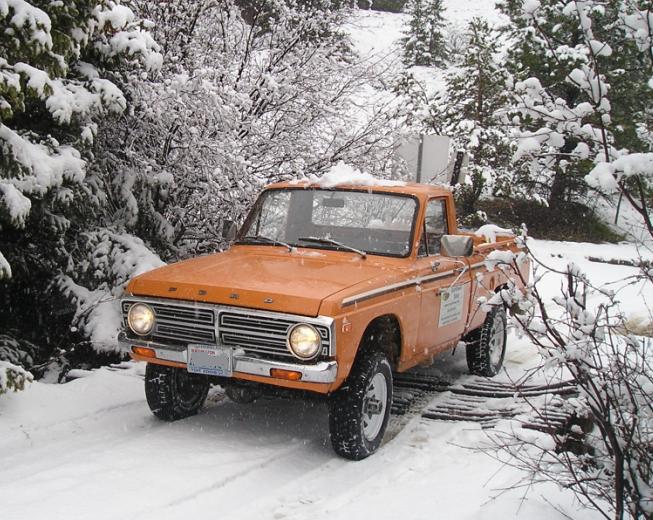
The Ford Courier was never available as an OEM 4 wheel drive version in the US (the Mazda B-series didn’t get 4 wheel drive until 1986). However, there were several companies doing 4×4 conversions of the Ford Courier by adding a transfer case and solid front axle beginning in 1975 . From 1975 to 1979 Northwest ATV in Kelso Washington converted about 1500 Couriers to 4WD, which where sold as the Ford Courier Sasquatch, in the WA, OR, CA, and ID markets only. (Ford Sasquatch brochure). Other conversions of early 1980’s Couriers were done by other companies as well.
These were popular, however when the manufacturers began offering OEM 4×4 versions of their small trucks, the higher cost of a conversion could not compete. Toyota introduced a 4×4 truck in 1978, Isuzu in 1979, Datsun in 1980, and Mitsubishi in 1982.
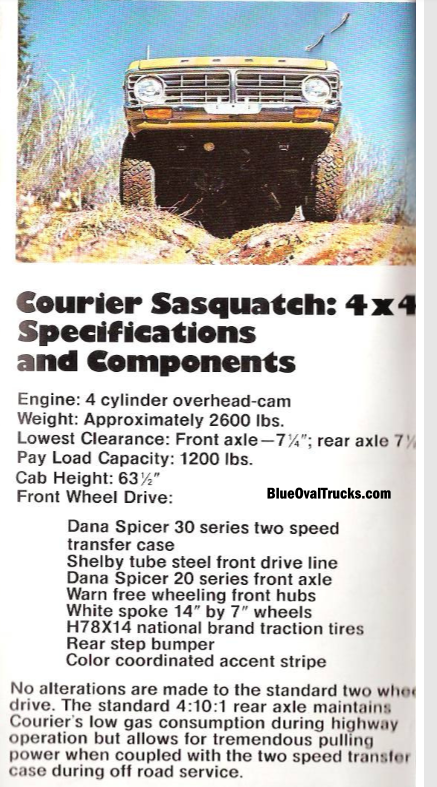
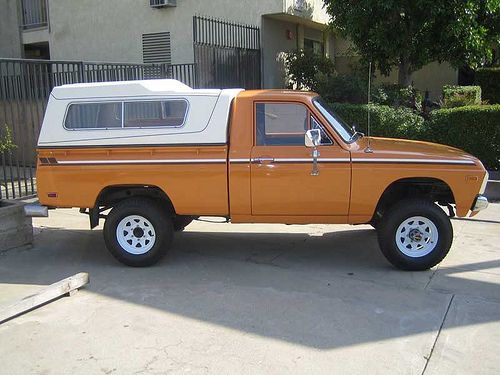
Brochures:
Ford Courier Sasquatch Brochure
Ford Courier Advertisements:
(Click the photos to enlarge – click the arrows to load more)

